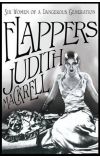
09 Jun 2013 23:24:27
Despite the absence of jazz in Baz Luhrmann's adaptation of The Great Gatsby, its release is bound to be accompanied by a rash of books about the jazz age, of which Judith Mackrell's Flappers is likely to be one of the better ones. Between the first world war and the great depression, a new breed of woman briefly flourished, rebelling against traditional female roles: the flapper. "In their various attempts to live and die in their own way, the flappers represented a genuinely subversive force," writes Mackrell, and by profiling six of the most celebrated women of the Roaring Twenties she captures something of that force beneath the trademark shingled bobs, short straight dresses and gin-fuelled exuberance. Josephine Baker is the highlight: sent off to be a maid aged seven and already bigamously married by the age of 15, she burst through her inauspicious background and racial discrimination to become one of the most famous entertainers in the world. Then there's Zelda Fitzgerald, famed first as a southern belle, later for her tumultuous marriage to F Scott Fitzgerald, and finally for her descent into madness. Russian revolution escapee Tamara de Lempicka pioneered a style of painting that was to be the visual signature of the decade; Tallulah Bankhead's name became the very verb to express ebullient provocation. Next to them, Britain's flapper representatives Nancy Cunard and Diana Cooper appear tame in comparison.
But under the facade of glamorous excess, there were sexual troubles and gynaecological agonies, severe mental illness and dysfunctional relationships, and the continuing disapproval of society. Mackrell's study suggests that in their quest for liberty, flappers were sold a bead-covered lemon.

